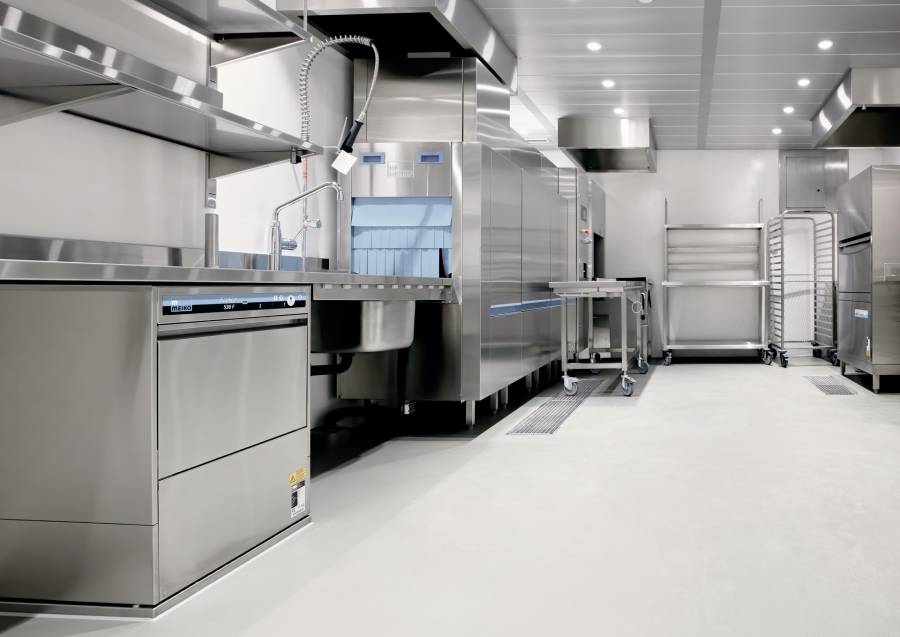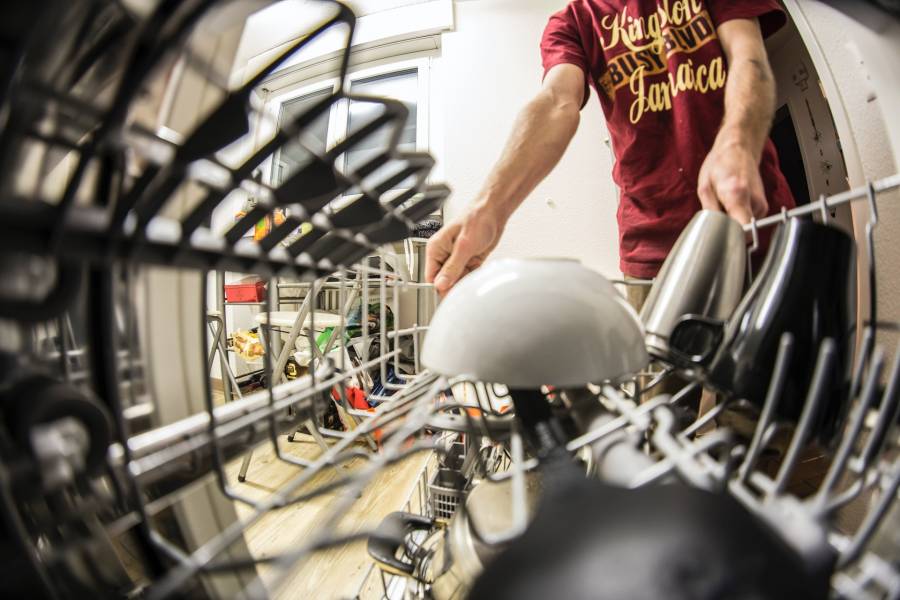Whether you’re replacing or installing a new dishwasher to your garbage disposal without an air gap, you just want to avoid the problem of having to place a bucket under your washbasin to collect the particles and water that go down when you wash.
Connecting the dishwasher to the garbage disposal without an air gap will require a hose, a PVC pipe, a wood screw, and a screwdriver.

Connect the hose by inserting it into the dishwasher, then screw the nail.
If your washing machine is not well-connected to the garbage disposer, it will make particles clog the drain. When these particles block the drain, they can cause a nasty smell.
This informational guide explains the steps in connecting a dishwasher to a garbage disposal without an air gap.
Tools Required for Connecting Dishwasher to Garbage Disposal Without Air Gap
Screwdrivers
A screwdriver is a manual tool that helps you turn your wood screws to make them loose or tight. Asides from using a screwdriver for this process, you can opt for a driller.
Wood Screws (Nails)
A wood screw is a type of nail that does not require the use of a hammer. It works perfectly for washing machine connections.
The reason is that the hose used to connect the washing machine to the waste disposer is rubber, and it is not ideal to use a hammer to tap a nail into it.
Drain Hose
A drain hose is a tool used in connecting the dishwasher to the garbage disposal. It is the channel through which water and food particles pass through to enter the garbage disposal.
PVC Pipe
You cannot just insert a hose into the garbage disposer without the pipe.
Usually, it comes in two forms – the one you fix directly to the washing machine and the one you insert into the wall where the hose will pass through to the garbage disposal.
Tape
When you insert the hose into the pipe, you will use the tape to tie the edge where the two-hole point connects. It keeps the pipe and the hose to stay together.
Other extra tools include cement and glue. Some hoses come with knots. If yours is this type, you’ll need a plier to tighten it.
Things to Consider Before Connecting Dishwasher to Garbage Disposal Without Air Gap
The Size of the Hose
Hoses are of different shapes and sizes, and to connect your dishwasher to waste disposal, the average inch of the hose you’ll need is 7.
The Type of Pipe
The pipe that works best for connecting your dishwasher to the waste disposer is a PVC pipe. The reason is that this type of pipe is more durable and has a thickness that makes it unable to break easily.
Wood Screws (Nails)
Wood screws are the best for connecting the dishwasher to the garbage disposal without an air gap. The reason is that the hose is rubber and will get damaged if you try to tap a nail into it with a hammer.
Glue
Glue works best when you are attaching your hose to the sink. It helps the hose stick to it without falling off.
Cement Mixed with Water
If you prefer using a pipe to connect your dishwasher, it will require cement to attach it to the wall.
Gloves
When you want to fix your dishwasher drain, it is necessary to put on gloves to serve as protection for your hands.

DIY Connecting Dishwasher to Garbage Disposal Without Air Gap | Step-By-Step Process
Daily, different varieties of food particles go down your dishwasher. Although this may seem natural, you’ll likely face challenges if your dishwasher hose is not well-connected to the waste disposal.
The issue usually occurs because of a broken hose or pipe. Before connecting the dishwasher to the garbage disposal without an air gap, check to ensure that there is no dirt or clogged particles in the drain.
Whether your washbasin connection has a fault or you want to install a new one, the steps outlined here are detailed enough to guide you.
Connecting Dishwasher to Garbage Disposal Without Air Gap || With Hose
Method 1
- First, remove the damaged one. To remove the old hose, check underneath the kitchen washing machine to locate the hose. On the hose, you’ll find where there is a screw nail, then use your screwdriver to unscrew and remove it from the end fixed to the wall.
- Once you’ve removed it, insert the new hose, put it back into its hole point, and screw it tight. The inch for the hose is usually 6 – 7 inches.
- Insert the other end of the hose into the hole point on the garbage disposal, then screw.
- Finally, wrap the hose with tape to strengthen it.
Method 2
Some waste disposals are big tanks, and homeowners prefer to keep them outside the kitchen.
If your garbage disposer is outside, you’ll have to pass the hose through the pipe hole in the wall to where you have the garbage disposer.
- Check underneath the sink to locate one end of the hose.
- Unscrew one end of the hose and insert the new hose, then screw to tighten.
- Take the other end of the hose and put it into the hole point in the wall.
- When you pull out the hose from the other side, insert it into the pipe point on the garbage disposal, then screw it tight.
- Finally, wrap the hose and the pipe with tape to strengthen it.
Connecting Dishwasher to Garbage Disposal Without Air Gap || With PVC Pipe
The first step is to install your PVC pipe in the wall and washbasin. For this process, you’ll need cement, glue, and the pipe itself.
- Pick each pipe and join them with the caps that come with it. The joining of the pipes will depend on the type of structure your washbasin and garbage disposer has. Some can be in an L shape and some in a T shape.
- Drill a hole in the wall underneath the dishwasher. Next, mix cement with water.
- Once done, insert the pipe into the hole and seal it with cement.
- To attach the pipe to the washer, you won’t need cement. The reason is that the PVC pipe can leak when it gets old, then require a replacement. The tool you use to attach the pipe to the washing machine is glue.
- Next, take the last end of the pipe and apply glue to it. Then, insert it into the hole point in the garbage disposal.
- If you prefer a big tank garbage disposer usually kept outside the kitchen, you’ll have to drill a hole in the wall. Then connect it by inserting a hose on the washing machine before passing it through the wall to where you have the garbage disposer (this method doesn’t require pipes).
Wrap Up
Clogged drains can threaten human health because they produce an offensive odor that can cause illness in extreme cases. So, it is best to treat your waste drainage with care.
Depending on your location, hiring a plumber to fix your drainage may cost you between $100 to $250.
Connecting the dishwasher to the garbage disposal without an air gap is a simple DIY to help you save money; after all, you have the tools in your house.
Asides from replacing the hose or pipe, you can clean the drainage with baking soda or vinegar. Mix the vinegar or soda with water, then pour it down the drain.
